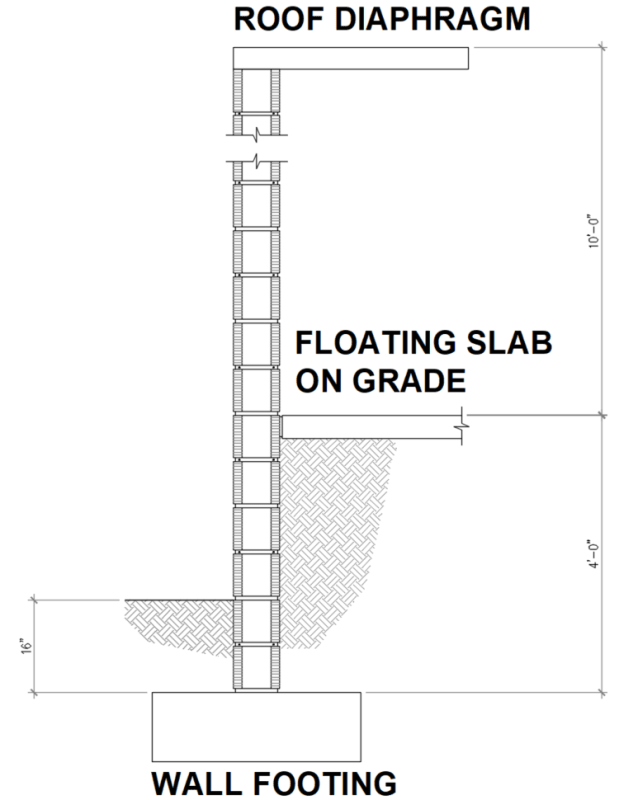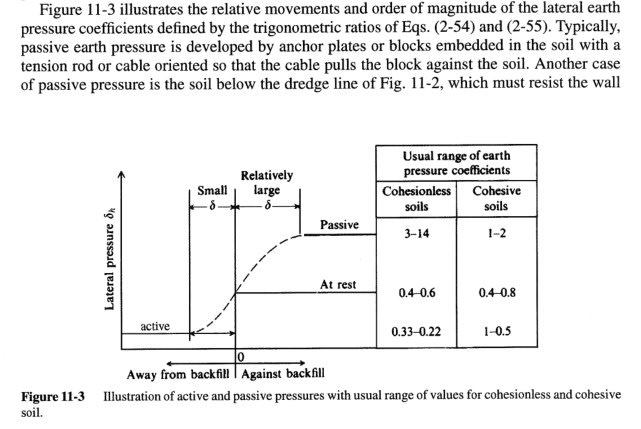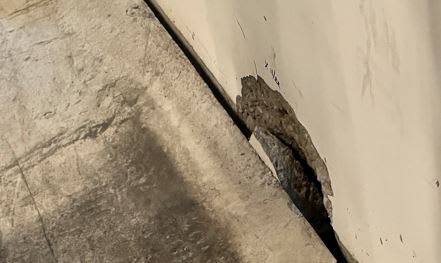Normally retaining walls keep soil out of the structure. I have the inverse situation.
For the image shown below, when considering the overburden and surcharge loads inside the structure, would the lateral forces for the retained soil be determined with at-rest pressure Ko or active pressure Ka? Keep in mind, the overall wall height is 14ft tall and is required to satisfy L/360 = 0.466".
My overburden is developed from the 4ft of soil being retained.
My surcharge is developed from the 40PSF interior slab loading.
Note: I did not use the slab DL as surcharge, I let that reside within the 4ft of soil (in reality, for a 4" slab, that's roughly 50 PSF[sub][/sub])

For the image shown below, when considering the overburden and surcharge loads inside the structure, would the lateral forces for the retained soil be determined with at-rest pressure Ko or active pressure Ka? Keep in mind, the overall wall height is 14ft tall and is required to satisfy L/360 = 0.466".
My overburden is developed from the 4ft of soil being retained.
My surcharge is developed from the 40PSF interior slab loading.
Note: I did not use the slab DL as surcharge, I let that reside within the 4ft of soil (in reality, for a 4" slab, that's roughly 50 PSF[sub][/sub])




